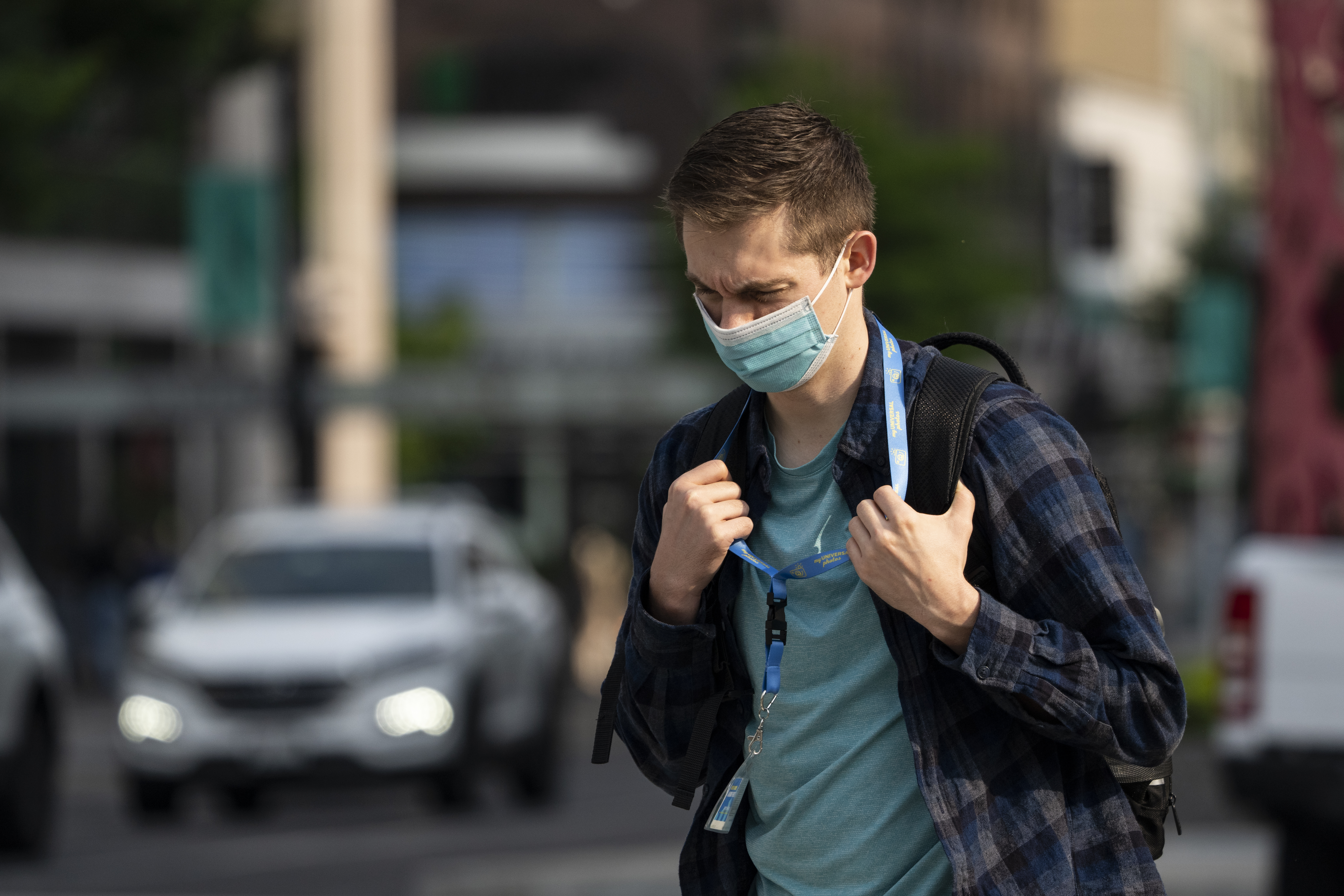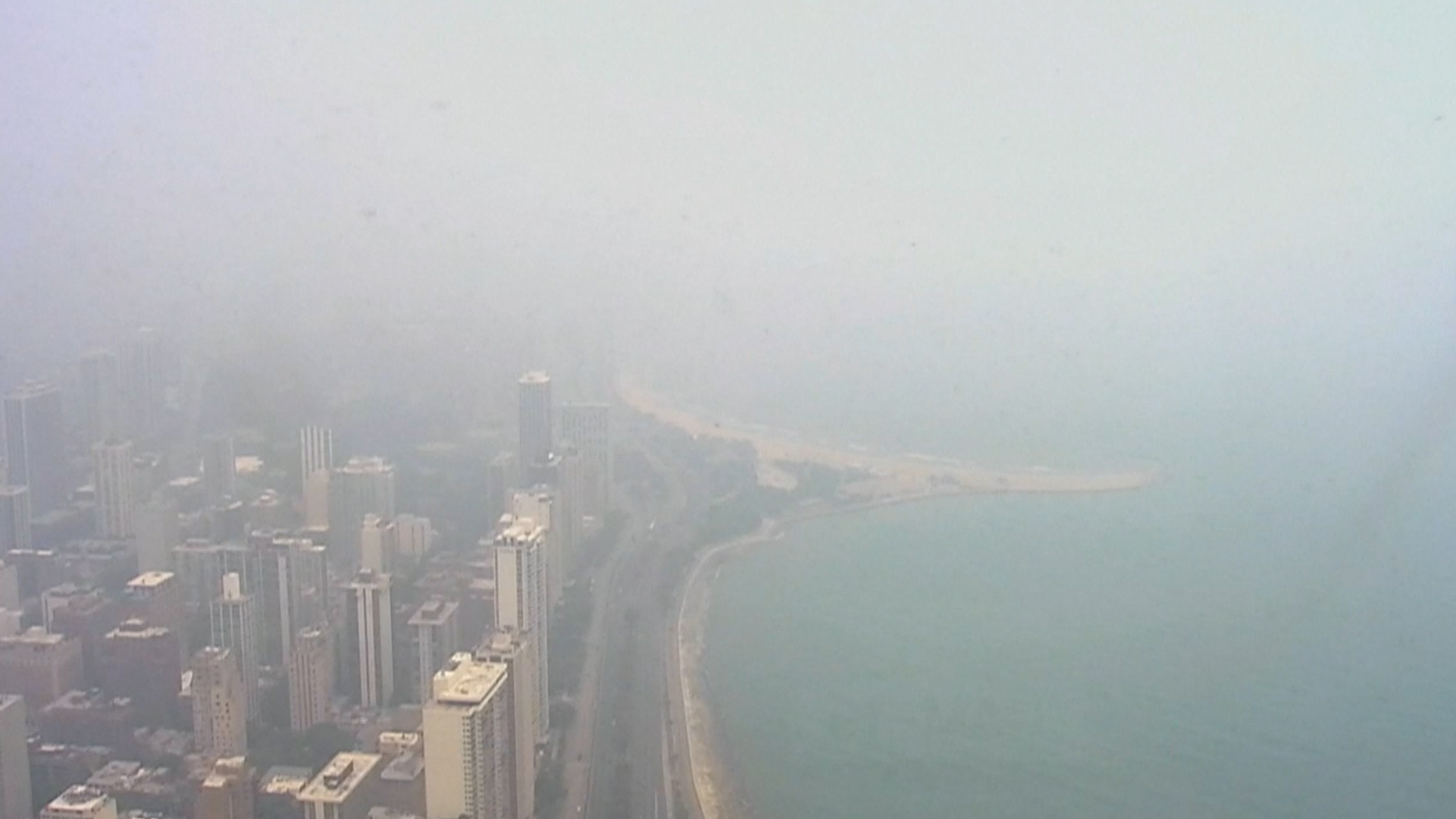Chicago's air quality continued to worsen as the day went on Tuesday, nearing the threshold to be declared "hazardous" as it reached "unusual" levels far higher than anything experienced in the last several weeks.
As of 6 p.m., however, the city's number sat at 258, where it had been since 3 p.m., according to the government air quality website, AirNow.
To check the air quality level in your area right now, click here.
Chicago's air quality entered "very unhealthy" territory just before noon Tuesday and continued to rise.
Previously, the PM2.5 -- an air pollutant also known as fine particulate matter, which is causing much of the haze in the region -- reached 250 as of 2 p.m. Levels were at 209 at 11:30 a.m. and 228 at 1 p.m.
Anything over 200 is considered "very unhealthy, though in the last month, the city hasn't seen its numbers climb above 160. Once the region reaches above 300, it enters a "hazardous" level.
According to the World Air Quality Index, which ranks cities across the globe from worst air quality to best, Chicago currently holds the No. 1 spot -- and that was before levels rose even higher Tuesday.
The conditions have already led to an air quality alert, shut down beaches in some suburbs and led others to move scheduled events indoors or cancel them altogether.
The National Weather Service also issued an air quality alert around that same time that remains in effect until midnight Wednesday, though conditions are expected to be "unhealthy for sensitive groups" across Illinois Wednesday.
Feeling out of the loop? We'll catch you up on the Chicago news you need to know. Sign up for the weekly Chicago Catch-Up newsletter here.
The NWS reported smoke from wildfires in Canada is moving into the region and "pushing air quality into the unhealthy or worse categories." The agency urged people to reduce or limit outdoor activities.
Chicago Department of Public Health Commissioner Dr. Allison Arwady said reaching such a level is "unusual" in the Chicago area.
"It's actually pretty unusual for us to fall into it based on that PM2.5," she said. "Our ozone is actually good right now, so it's the PM2.5 - it's at a higher level."
According to data from AirNow, Chicago hasn't climbed above 160 for PM2.5 at all within the last month. The region has only reached above 150, entering the "red" category, just three times since May 28.
In total, there are six categories: green, or good; yellow, or moderate; orange, or unhealthy for sensitive groups; red, or unhealthy; purple, or very unhealthy; and maroon, or hazardous.
| Daily AQI Color | Levels of Concern | Values of Index | Description of Air Quality |
|---|---|---|---|
| Green | Good | 0 to 50 | Air quality is satisfactory, and air pollution poses little or no risk. |
| Yellow | Moderate | 51 to 100 | Air quality is acceptable. However, there may be a risk for some people, particularly those who are unusually sensitive to air pollution. |
| Orange | Unhealthy for Sensitive Groups | 101 to 150 | Members of sensitive groups may experience health effects. The general public is less likely to be affected. |
| Red | Unhealthy | 151 to 200 | Some members of the general public may experience health effects; members of sensitive groups may experience more serious health effects. |
| Purple | Very Unhealthy | 201 to 300 | Health alert: The risk of health effects is increased for everyone. |
| Maroon | Hazardous | 301 and higher | Health warning of emergency conditions: everyone is more likely to be affected. |






